This very unusual French tray has a wooden base and a rim made with fine wickerwork, featuring thin, alternately gilded strips, some of which still retain their gilding. The inner part of the tray is occupied by a beautifully painted oval glass on the back. The tray was created as a unique piece in 1931 to be given as a gift, as evidenced by the dedication on the bottom: "Affectionately to Mademoiselle Snollaerts. Team from August 15 to 31, 1931." The object was undoubtedly commissioned from one of the many craft workshops in the Montmartre neighborhood of Paris in 1931. The enigmatic dedication does not reveal the purpose or reason for the gift.
Montmartre is a neighborhood located in the 18th arrondissement, known for its bohemian and artistic ambiance. During the late 19th and early 20th centuries, Montmartre was the heart of the Parisian art scene. Numerous artists, painters, sculptors, and craftsmen settled in the area due to its relatively low rents and vibrant creative community. These artists worked in close proximity, often collaborating and influencing each other. The presence of numerous ateliers and artisan workshops made it possible to produce custom objects. Montmartre's artisans were known for their skill in working with various materials and creating unique pieces. The area was home to artists such as Pablo Picasso, Vincent van Gogh, Henri Matisse, and many others.
The image on the tray depicts a maiden dressed in historical clothing, with a background featuring branches with hanging red fruits, evoking the appearance of a "rain" of fruits. The maiden's attire, with its wide, ornate dress and hat, seems to recall a style from the late 18th century, probably from the period of the French Revolution. This type of hat, known as the "chapeau à la Henri IV" or "bicorne," was popular among aristocrats and the bourgeoisie during that period. The depicted plant looks like a weeping willow (Salix babylonica) or a tree with similar characteristics, with slender, pendulous branches. The red fruits may be an artistic addition to impart color and symbolism, rather than representing a specific tree. In fact, red fruits or berries can symbolize vitality, fertility, and abundance. The color red is often associated with passion, energy, and life itself. This shower of red fruits can therefore suggest a deep connection with nature and a cycle of life and rebirth. The painting may represent a celebration of nature and its bounty. The maiden under this rain of fruit could symbolize a lost or desired harmony between humans and the natural environment. There may also be a story behind the depicted scene, perhaps a local myth or legend, about a maiden blessed by nature or protected by a magical tree.
The way the tree is depicted, with branches resembling rain, may recall the works of artists such as Gustav Klimt, who often used natural and decorative motifs in his paintings. Artists of the Art Nouveau period, such as Alphonse Mucha or Aubrey Beardsley, may also have inspired such a work with their predilection for sinuous lines and stylized natural elements. Additionally, the arrangement of the branches and fruits may follow a harmonious and balanced structure typical of Art Nouveau symbolist works. The tempera painting technique used could be the so-called "reverse painting on glass"; in this case, there is a particular brilliance and sharpness due to the smooth surface of the glass. The choice of tempera suggests attention to detail and a refined technique. Tempera is known for its brightness and durability, characteristics that could have been exploited to make the colors of the fruits and the details of the branches vivid.
The fine wicker workmanship is very precise and meticulous; the wicker is made from rattan or guinea cane. For its production, the innermost part of the rattan cane is used, which is divided into very thin strips that can intertwine with each other in a series of very dense weaves, strictly handmade to achieve a very refined and high-quality mesh. The tray is in good condition. Measurements: width 54 cm, depth 36 cm, height 4 cm.
Questo insolito vassoio francese ha una base in legno e un bordo realizzato con un fine intreccio di vimini, caratterizzato da sottili strisce dorate alternate, alcune delle quali conservano ancora la doratura. La parte interna del vassoio è occupata da un vetro ovale splendidamente dipinto sul retro. Il vassoio è stato creato come pezzo unico nel 1931 per essere regalato, come dimostra la dedica sul fondo: "Con affetto a Mademoiselle Snollaerts. Squadra dal 15 al 31 agosto 1931" L'oggetto è stato senza dubbio commissionato a uno dei tanti laboratori artigianali del quartiere di Montmartre a Parigi nel 1931. L'enigmatica dedica non rivela lo scopo o il motivo del dono.
Montmartre è un quartiere situato nel 18° arrondissement, noto per il suo ambiente bohémien e artistico. Tra la fine del XIX e l'inizio del XX secolo, Montmartre era il cuore della scena artistica parigina. Numerosi artisti, pittori, scultori e artigiani si stabilirono nella zona grazie agli affitti relativamente bassi e alla vivace comunità creativa. Questi artisti lavoravano a stretto contatto, spesso collaborando e influenzandosi a vicenda. La presenza di numerosi atelier e laboratori artigianali rendeva possibile la produzione di oggetti personalizzati. Gli artigiani di Montmartre erano noti per la loro abilità nel lavorare diversi materiali e nel creare pezzi unici. La zona ospitava artisti come Pablo Picasso, Vincent van Gogh, Henri Matisse e molti altri.
L'immagine sul vassoio raffigura una fanciulla vestita in abiti storici, con uno sfondo caratterizzato da rami con frutti rossi pendenti, che evocano l'aspetto di una "pioggia" di frutti. L'abbigliamento della fanciulla, con il suo abito ampio e ornato e il cappello, sembra richiamare uno stile della fine del XVIII secolo, probabilmente del periodo della Rivoluzione francese. Questo tipo di cappello, noto come "chapeau à la Henri IV" o "bicorne", era popolare tra gli aristocratici e la borghesia di quel periodo. La pianta raffigurata sembra un salice piangente (Salix babylonica) o un albero con caratteristiche simili, con rami sottili e pendenti. I frutti rossi potrebbero essere un'aggiunta artistica per conferire colore e simbolismo, piuttosto che rappresentare un albero specifico. Infatti, i frutti o le bacche rosse possono simboleggiare vitalità, fertilità e abbondanza. Il colore rosso è spesso associato alla passione, all'energia e alla vita stessa. Questa pioggia di frutti rossi può quindi suggerire una profonda connessione con la natura e un ciclo di vita e rinascita. Il dipinto può rappresentare una celebrazione della natura e della sua abbondanza. La fanciulla sotto questa pioggia di frutti potrebbe simboleggiare un'armonia perduta o desiderata tra gli esseri umani e l'ambiente naturale. Potrebbe anche esserci una storia dietro la scena raffigurata, forse un mito o una leggenda locale, su una fanciulla benedetta dalla natura o protetta da un albero magico.
Il modo in cui è raffigurato l'albero, con i rami che ricordano la pioggia, può ricordare le opere di artisti come Gustav Klimt, che spesso utilizzava motivi naturali e decorativi nei suoi dipinti. Anche gli artisti del periodo Art Nouveau, come Alphonse Mucha o Aubrey Beardsley, potrebbero aver ispirato un'opera del genere con la loro predilezione per le linee sinuose e gli elementi naturali stilizzati. Inoltre, la disposizione dei rami e dei frutti potrebbe seguire una struttura armoniosa ed equilibrata tipica delle opere simboliste dell'Art Nouveau. La tecnica di pittura a tempera utilizzata potrebbe essere la cosiddetta "pittura a rovescio su vetro"; in questo caso, si nota una particolare brillantezza e nitidezza dovuta alla superficie liscia del vetro. La scelta della tempera suggerisce attenzione ai dettagli e una tecnica raffinata. La tempera è nota per la sua brillantezza e durata, caratteristiche che potrebbero essere state sfruttate per rendere vividi i colori dei frutti e i dettagli dei rami.
La lavorazione del vimini è molto precisa e meticolosa; il vimini è realizzato in rattan o canna d'India. Per la sua produzione viene utilizzata la parte più interna della canna di rattan, che viene divisa in strisce molto sottili che possono intrecciarsi tra loro in una serie di trame molto fitte, rigorosamente fatte a mano per ottenere una maglia molto raffinata e di alta qualità. Il vassoio è in buone condizioni. Misure: larghezza 54 cm, profondità 36 cm, altezza 4 cm.



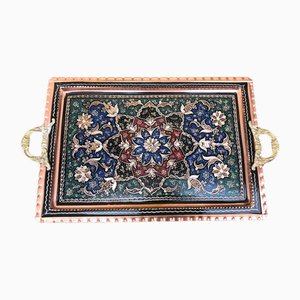
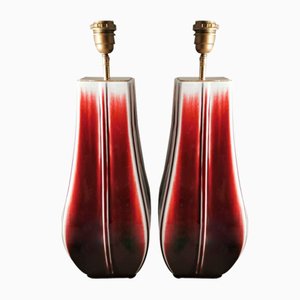

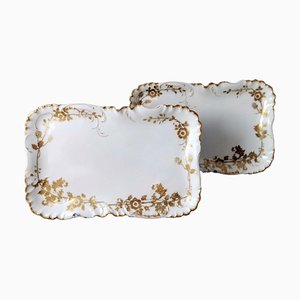
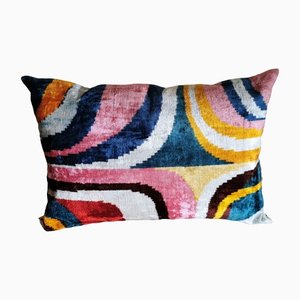

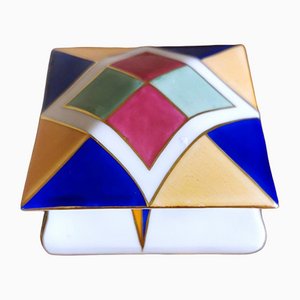
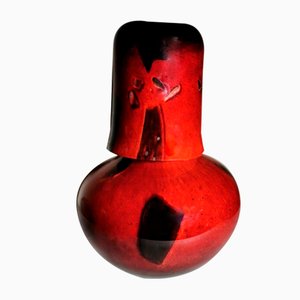

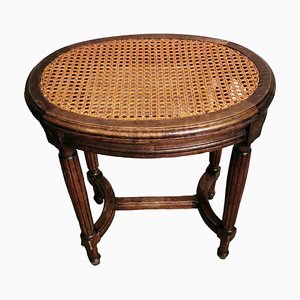

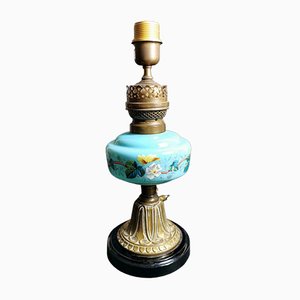


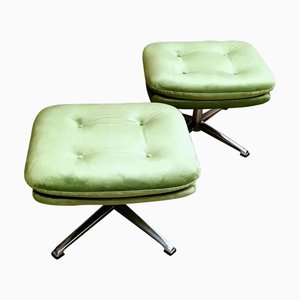
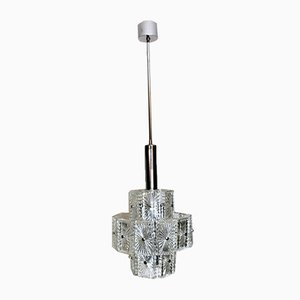


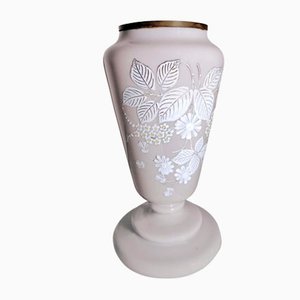
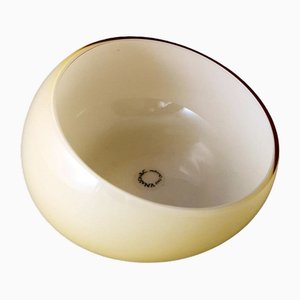
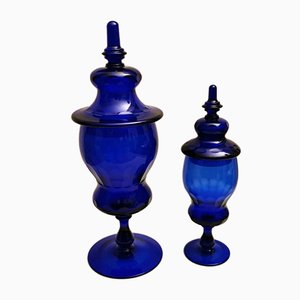
Contattaci
Fai un'offerta
Abbiamo notato che sei nuovo su Pamono!
Accetta i Termini e condizioni e l'Informativa sulla privacy
Contattaci
Fai un'offerta
Ci siamo quasi!
Per seguire la conversazione sulla piattaforma, si prega di completare la registrazione. Per procedere con la tua offerta sulla piattaforma, ti preghiamo di completare la registrazione.Successo
Grazie per la vostra richiesta, qualcuno del nostro team vi contatterà a breve.
Se sei un professionista del design, fai domanda qui per i vantaggi del Programma Commerciale di Pamono